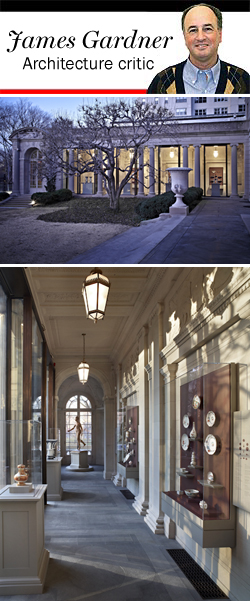Trending
Frick Collection’s portico is luxurious like rest of building

The portico at the Frick CollectionThe Frick Collection may well be the stodgiest and most stalwart institution in Manhattan — and I mean that as a compliment. But change does come to this doughty museum, as is evident in the opening, two weeks ago, of its new portico gallery, dedicated to sculpture and the decorative arts.
Strictly speaking, this is not a new structure, but rather the reapplication — one might almost say the resurrection — of a pre-existing structure. For nearly a century now, New Yorkers walking along Fifth Avenue and 71st Street have seen a long, colonnaded portico stretching from the recessed main building right up to the avenue. But no one ever entered it, and the museum never made any use of it. This is the narrow space that has now been developed into a lovely, glazed gallery that feels fully in keeping with the luxurious style of the rest of the building.
The original building, at 1 East 71st Street, was designed by Carrere & Hastings in 1914 and was partially inspired, according to the architectural historian Hilary Ballon, by Louis Le Vau’s mid-17th century Hotel Lambert in Paris. It was supplemented by John Russell Pope’s extensions in the early 1930s and by a small entrance annex designed by Harry Van Dyke in 1977.
The style of the limestone colonnade itself, with its raised sequence of four paired columns (echoed by paired pilasters along the back wall) under a lintel and ending in a charming pavilion, is a studious Beaux-Art reenactment of 17th century French Classicism. The interior, with its blue-stone floor, has been sensitively revamped by Davis Brody Bond, the architecture firm that designed the Sept. 11 Memorial Museum and the recent expansion of the main branch of the New York Public Library at 42nd Street.
At the very end of the gallery we see the Frick’s famous statue of Diana the Huntress by Jean-Antoine Houdon. This sculpture, which has not been on display for the past five years, now stands for the first time on Fifth Avenue, for which it serves as a stunningly lovely adornment, especially when it is seen, all lit up, at night.




